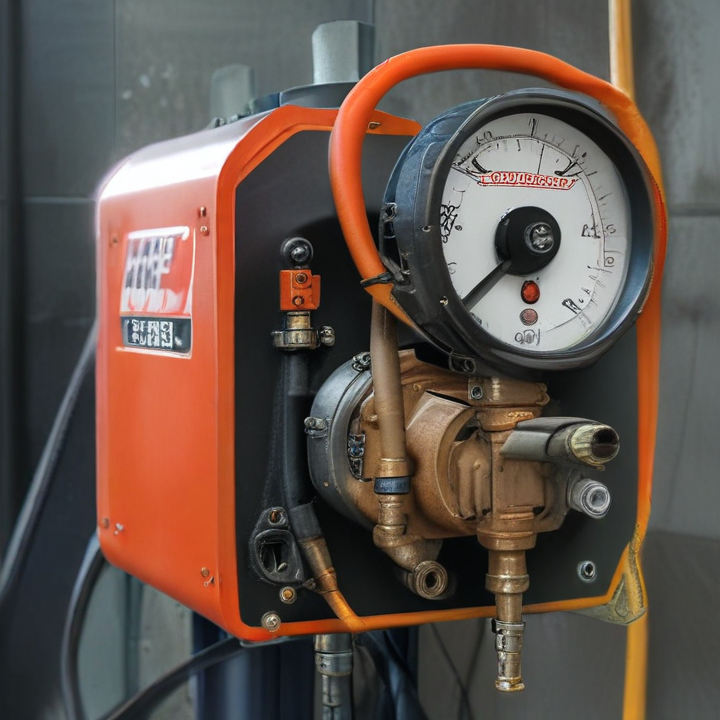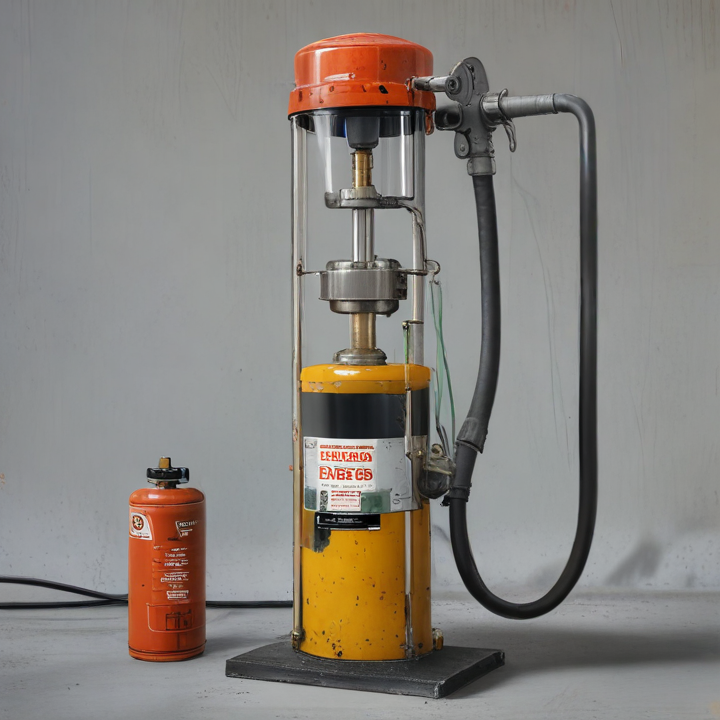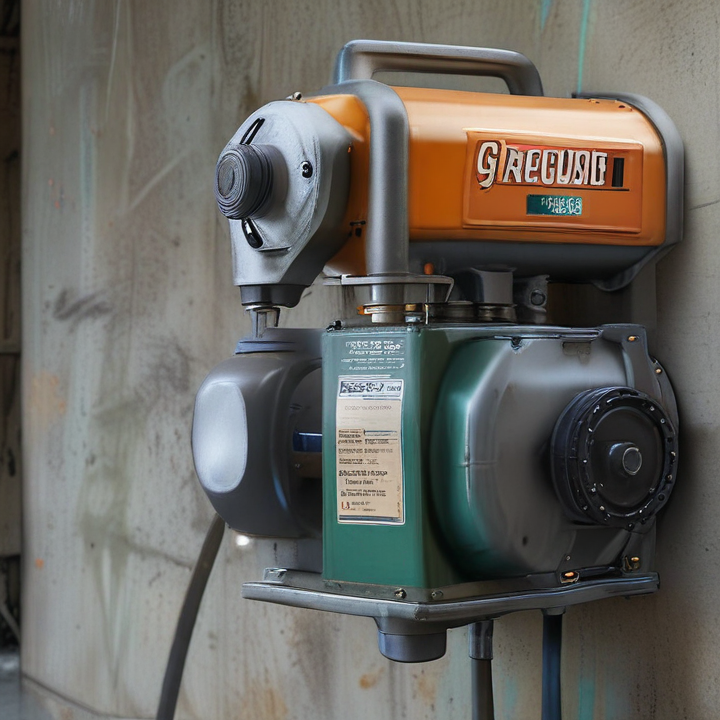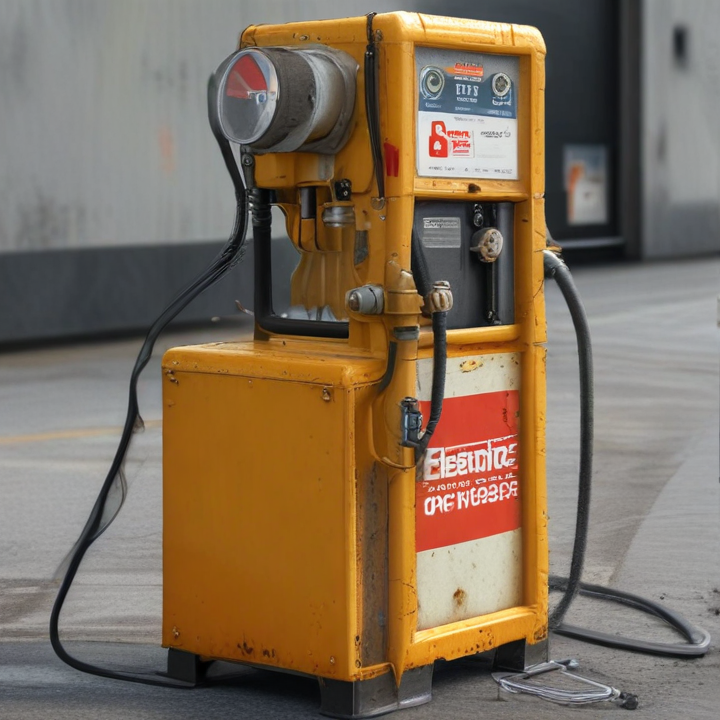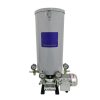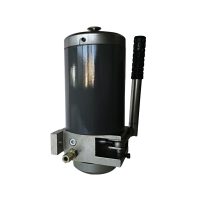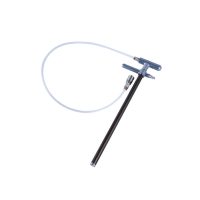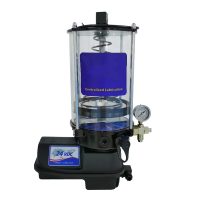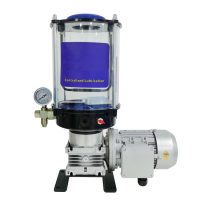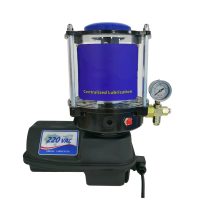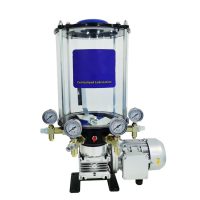electric grease pump Safety Certifications
Electric grease pumps, used for lubrication in industrial applications, must adhere to various safety certifications to ensure operational safety and reliability. Here are the key certifications typically required:
1. CE Marking (Conformité Européenne):
– Indicates compliance with EU safety, health, and environmental requirements.
– Ensures the product meets EU directives such as the Machinery Directive (2006/42/EC) and Low Voltage Directive (2014/35/EU).
2. UL Certification (Underwriters Laboratories):
– Ensures compliance with safety standards in the United States.
– Covers electrical safety, fire hazards, and mechanical integrity.
3. CSA Certification (Canadian Standards Association):
– Certifies compliance with Canadian safety standards.
– Similar to UL, focuses on electrical safety and fire hazards.
4. ATEX Certification (Atmosphères Explosibles):
– Required for equipment used in explosive atmospheres within the EU.
– Ensures the pump is safe to operate in environments with flammable gases or dust.
5. IECEx Certification (International Electrotechnical Commission Explosive Atmospheres):
– Similar to ATEX but recognized globally.
– Ensures safety in explosive atmospheres according to international standards.
6. ISO Certification (International Organization for Standardization):
– ISO 9001: Quality management systems certification.
– ISO 14001: Environmental management systems certification.
– Ensures high-quality manufacturing processes and environmental responsibility.
7. RoHS Compliance (Restriction of Hazardous Substances):
– Ensures that the pump does not contain hazardous substances above specified levels.
– Essential for compliance with EU environmental regulations.
8. IP Rating (Ingress Protection):
– Specifies the degree of protection against solids and liquids.
– Common ratings for electric grease pumps include IP54, IP65, etc.
9. EMC Compliance (Electromagnetic Compatibility):
– Ensures the pump does not emit electromagnetic interference and is immune to it.
– Compliance with EU EMC Directive (2014/30/EU) and FCC standards in the USA.
Ensuring these certifications enhances the safety, reliability, and marketability of electric grease pumps in various regions and industries.
List Reference Technical Parameters of “electric grease pump”
Certainly! Here are the reference technical parameters for an electric grease pump:
Electric Grease Pump Technical Parameters
1. Motor Power:
– Ranges from 0.12 kW to 0.75 kW, depending on the model and required pressure.
2. Voltage:
– Commonly 220V or 380V AC, with options for 110V or 24V DC for specific applications.
3. Pressure Output:
– Typically between 10 MPa (100 bar) and 40 MPa (400 bar).
4. Flow Rate:
– Varies from 0.5 to 10 liters per minute, adjustable depending on the pump design and usage.
5. Reservoir Capacity:
– Ranges from 2 liters to 30 liters, with larger capacities available for industrial applications.
6. Control Options:
– Manual, semi-automatic, or fully automatic controls.
– Options for integration with PLC (Programmable Logic Controller) systems for precise control.
7. Pump Types:
– Single-line, dual-line, and progressive systems are available to suit different lubrication needs.
8. Lubricant Compatibility:
– Suitable for various grease types, usually up to NLGI grade 3.
9. Operating Temperature Range:
– Typically between -20°C to 60°C, with some models designed for extreme conditions.
10. Material:
– Pump body and components made from high-strength materials like steel or aluminum to withstand high pressure and ensure durability.
11. Mounting Options:
– Floor-mounted, wall-mounted, or portable designs to accommodate different installation requirements.
12. Protection Class:
– IP54 to IP67, ensuring dust and water resistance for reliable operation in harsh environments.
13. Noise Level:
– Generally below 70 dB, depending on the model and operational conditions.
14. Weight:
– Varies from 5 kg to over 50 kg, depending on the size and capacity of the pump.
15. Accessories:
– Optional accessories include pressure gauges, relief valves, and various hose and nozzle configurations for customized setups.
These parameters are crucial for selecting the right electric grease pump for specific industrial or maintenance applications, ensuring optimal performance and reliability.
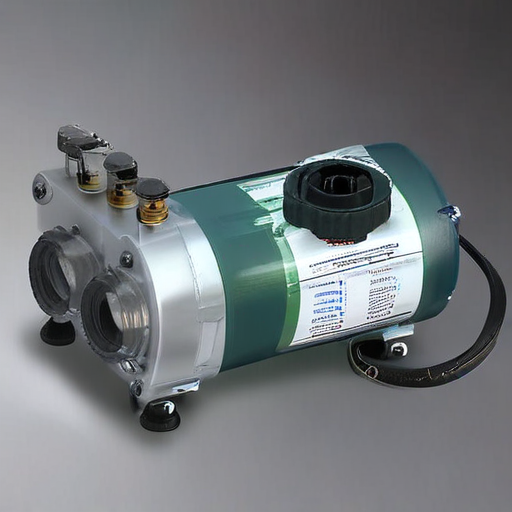
List Product features of “electric grease pump”
Certainly! Here are the key product features of an electric grease pump:
1. Electric Motor Drive:
– High Efficiency: Ensures consistent and reliable performance.
– Variable Speed Control: Allows for precise adjustment of grease flow.
2. Pump Mechanism:
– High Pressure Capability: Designed to handle high-pressure applications, often up to 10,000 psi or more.
– Durable Construction: Made from robust materials like stainless steel or aluminum to withstand harsh environments and frequent use.
3. Grease Reservoir:
– Large Capacity: Often equipped with sizable tanks (up to 30 liters or more) to reduce the frequency of refilling.
– Easy Refill Design: Features like quick-release lids or large openings for hassle-free refilling.
4. Control System:
– Automated Operation: Can be programmed for specific intervals and durations, ensuring consistent lubrication.
– Remote Control Options: Some models offer remote control capabilities for added convenience and flexibility.
5. Safety Features:
– Overload Protection: Prevents damage to the pump and motor by shutting down in case of excessive load.
– Pressure Relief Valves: Protects the system from over-pressurization, ensuring safe operation.
6. Portability:
– Mobility Options: Some pumps come with wheels or handles for easy transportation around the worksite.
– Compact Design: Designed to fit in tight spaces while maintaining performance.
7. Versatility:
– Multiple Grease Types: Capable of handling various grease viscosities, making it suitable for different applications.
– Wide Range of Applications: Ideal for automotive, industrial, and heavy machinery lubrication needs.
8. Ease of Maintenance:
– Simple Disassembly: Designed for easy cleaning and maintenance, with accessible components.
– Replacement Parts Availability: Spare parts are readily available, ensuring long-term serviceability.
These features make electric grease pumps an essential tool for efficient, reliable, and safe lubrication in various industries.
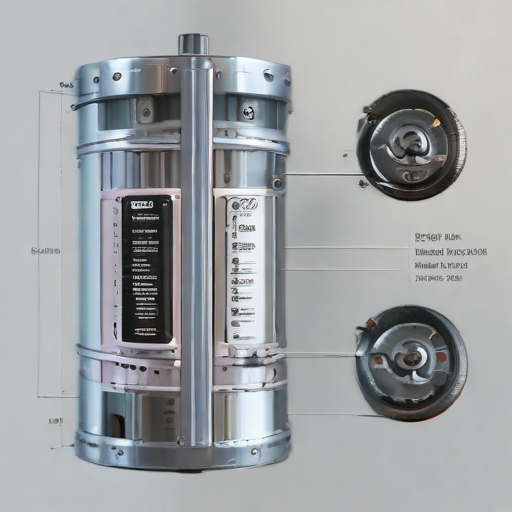
List Various Types of “electric grease pump”
Sure, let’s dive into the different types of electric grease pumps. These devices are used for lubricating machinery efficiently and come in various forms based on their applications and features:
1. Portable Electric Grease Pumps:
– Battery-Operated Pumps: Ideal for remote locations without access to electrical outlets. They are lightweight and easy to transport.
– AC-Powered Pumps: Require an electrical outlet. They are suitable for workshops and factories with a stable power supply.
2. Stationary Electric Grease Pumps:
– Fixed Installation Pumps: Permanently installed in a specific location within a factory or large workshop. These pumps typically have a higher capacity and are used for extensive lubrication tasks.
– Centralized Lubrication Systems: Designed to lubricate multiple points from a single, central unit. These systems are highly efficient for large machinery with multiple lubrication points.
3. Handheld Electric Grease Pumps:
– Cordless Handheld Pumps: Battery-operated, compact, and easy to maneuver, making them perfect for on-the-go maintenance tasks.
– Corded Handheld Pumps: Similar to cordless but require a constant power source. They are slightly more powerful and suitable for extended use.
4. Automatic Grease Pumps:
– Programmable Pumps: Can be set to dispense grease at specific intervals. They are ideal for maintenance-free operations in critical machinery.
– Smart Pumps with IoT Integration: These pumps connect to a network, allowing for remote monitoring and control. They provide data on lubrication schedules and pump performance, enhancing maintenance efficiency.
5. High-Pressure Electric Grease Pumps:
– Single-Stage Pumps: Designed for standard lubrication tasks where moderate pressure is sufficient.
– Multi-Stage Pumps: Used in applications requiring high-pressure grease dispensing, such as heavy machinery and industrial equipment.
These various types of electric grease pumps cater to different industrial needs, enhancing lubrication efficiency and ensuring machinery longevity.
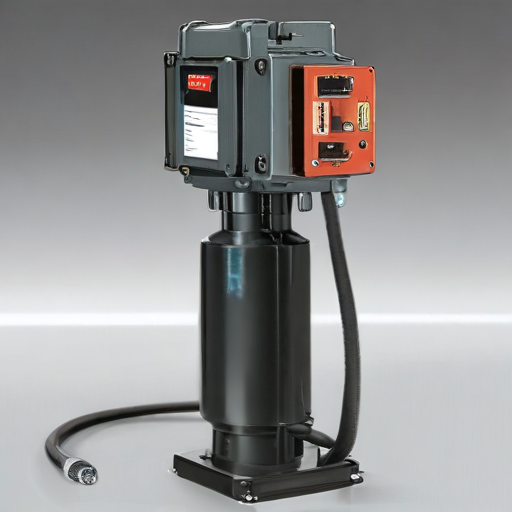
List Application of “electric grease pump”
An electric grease pump is a vital tool in various industries for efficient lubrication. Here are some key applications:
1. Industrial Machinery:
– Automated Lubrication: Ensures consistent and precise lubrication for machinery, reducing wear and tear.
– Maintenance Efficiency: Minimizes downtime by automating the lubrication process, ensuring machinery runs smoothly.
2. Automotive Industry:
– Vehicle Maintenance: Used in garages and workshops for lubricating moving parts in cars, trucks, and heavy vehicles.
– Assembly Lines: Ensures proper lubrication during the manufacturing process of vehicles, enhancing assembly line efficiency.
3. Construction Equipment:
– Heavy Machinery: Keeps bulldozers, excavators, and cranes lubricated, ensuring optimal performance in rugged conditions.
– Reduced Wear: Extends the lifespan of expensive construction equipment by providing consistent lubrication.
4. Agriculture:
– Farm Equipment: Lubricates tractors, harvesters, and other farming machinery, ensuring they operate effectively during critical farming seasons.
– Operational Efficiency: Reduces the risk of equipment failure, which can be crucial during planting and harvest periods.
5. Mining Industry:
– Mining Equipment: Keeps drills, loaders, and conveyors lubricated in harsh mining environments.
– Safety and Reliability: Ensures the reliability of mining operations, reducing the likelihood of equipment breakdowns that can pose safety risks.
6. Food and Beverage Industry:
– Processing Equipment: Lubricates machinery used in food processing, ensuring compliance with health and safety standards.
– Clean and Efficient: Helps maintain cleanliness and efficiency in production lines, which is essential for food safety.
7. Marine Industry:
– Ship Maintenance: Lubricates various components of ships and boats, such as winches, cranes, and engines.
– Corrosion Prevention: Protects metal parts from corrosion due to exposure to seawater.
8. Manufacturing:
– Production Lines: Ensures continuous operation of production lines by keeping all moving parts well-lubricated.
– Cost-Effective: Reduces maintenance costs by preventing premature equipment failure.
In summary, electric grease pumps are essential for maintaining machinery efficiency, reducing downtime, and extending the lifespan of equipment across various industries.
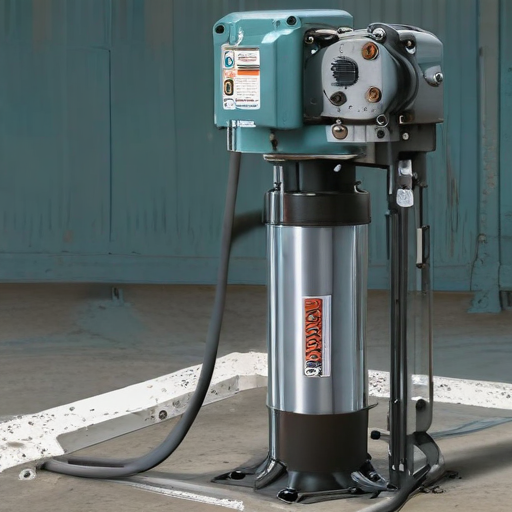
List Buyer Types of “electric grease pump”
Sure, here are the types of buyers who typically purchase electric grease pumps:
1. Manufacturing Companies
– These buyers need electric grease pumps for machinery maintenance and lubrication, ensuring smooth and efficient operation of production lines.
2. Automotive Workshops
– Car repair shops and maintenance centers use electric grease pumps for lubricating vehicle parts such as bearings, joints, and other components that require regular greasing.
3. Heavy Machinery Operators
– Businesses that operate heavy machinery, such as construction and mining companies, rely on electric grease pumps to maintain their equipment and prevent breakdowns.
4. Industrial Maintenance Services
– Companies specializing in industrial maintenance services purchase electric grease pumps to provide lubrication services for various industrial clients.
5. Agricultural Equipment Suppliers
– Suppliers of agricultural machinery and equipment use electric grease pumps to maintain tractors, harvesters, and other farming equipment.
6. Transportation and Logistics Companies
– These companies use electric grease pumps for the maintenance of their fleets of trucks, trailers, and other vehicles to ensure longevity and reliability.
7. Energy Sector Companies
– Electric grease pumps are crucial for maintaining equipment in the energy sector, including oil rigs, wind turbines, and other energy production facilities.
8. Railway Maintenance Providers
– Companies involved in the maintenance of railway systems use electric grease pumps for the upkeep of trains and rail infrastructure.
9. Municipal Services
– Municipal bodies and public works departments utilize electric grease pumps for the maintenance of public infrastructure and service vehicles.
10. Wholesale Distributors
– These buyers purchase electric grease pumps in bulk to supply to various industrial, automotive, and agricultural clients.
Each of these buyer types relies on electric grease pumps to maintain equipment efficiency, reduce downtime, and ensure the longevity of machinery and vehicles.
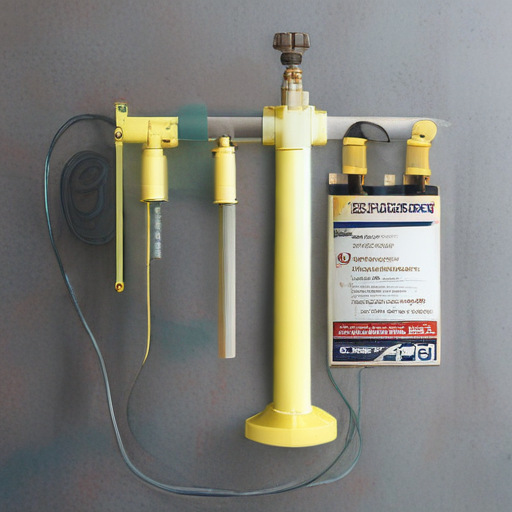
List “electric grease pump” Project Types for Different Industries
Electric grease pumps are essential for efficient lubrication in various industries, ensuring smooth operation and reducing wear and tear on machinery. Here are some key project types for different industries:
1. Automotive Industry:
– Assembly Line Lubrication: Automating the lubrication process in assembly lines to ensure consistent application of grease to moving parts.
– Vehicle Maintenance: Use in workshops and service centers for efficient lubrication of vehicle components like bearings, joints, and chassis.
2. Manufacturing Industry:
– CNC Machines: Providing precise lubrication to CNC machine components to enhance performance and longevity.
– Production Lines: Ensuring continuous lubrication of conveyor belts and robotic arms to minimize downtime and maintenance costs.
3. Mining Industry:
– Heavy Equipment Maintenance: Lubricating large mining equipment such as excavators, loaders, and haul trucks to prevent breakdowns and extend service life.
– Underground Operations: Ensuring reliable lubrication in harsh underground environments where manual lubrication is challenging.
4. Construction Industry:
– Heavy Machinery: Maintaining equipment like cranes, bulldozers, and excavators to ensure they operate smoothly and efficiently.
– Infrastructure Projects: Lubricating moving parts of construction machinery used in building roads, bridges, and tunnels.
5. Agriculture Industry:
– Farm Equipment: Lubricating tractors, harvesters, and other agricultural machinery to ensure optimal performance during planting and harvesting seasons.
– Irrigation Systems: Ensuring smooth operation of pivot systems and other irrigation machinery.
6. Food and Beverage Industry:
– Packaging Machinery: Lubricating packaging and bottling equipment to maintain hygiene standards and ensure smooth operations.
– Processing Equipment: Providing lubrication for machinery involved in food processing to avoid contamination and maintain efficiency.
7. Aerospace Industry:
– Aircraft Maintenance: Ensuring precise lubrication of aircraft components to comply with stringent safety and performance standards.
– Manufacturing Plants: Lubricating machinery used in the production of aerospace parts to maintain high-quality output.
8. Oil and Gas Industry:
– Drilling Equipment: Lubricating rigs and pumps used in drilling operations to prevent equipment failure and ensure continuous operation.
– Refinery Machinery: Ensuring lubrication of machinery in refineries to handle high loads and harsh conditions.
These project types highlight the versatility and importance of electric grease pumps across various industries, ensuring machinery operates efficiently and reliably.
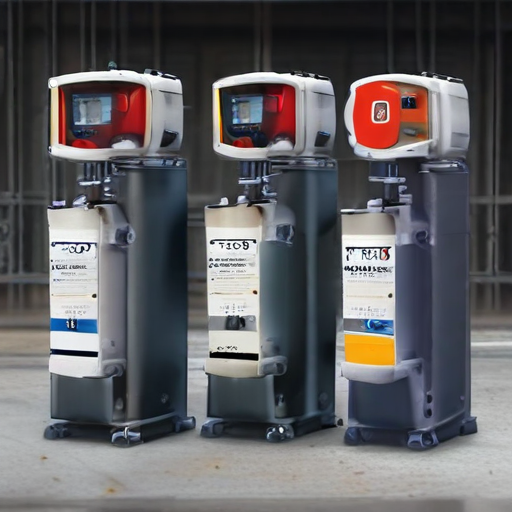
electric grease pump Accessories Upgrades and Custom Manufacturing Options
Electric grease pumps are essential in various industrial and maintenance settings, ensuring efficient lubrication. Upgrading and customizing these pumps can significantly enhance their performance and adaptability. Here are some key accessories, upgrades, and custom manufacturing options available:
Accessories
1. Grease Guns and Hoses: Essential for directing grease to specific areas. High-pressure hoses and precision grease guns ensure accurate application.
2. Meters and Gauges: Digital and analog meters for monitoring grease flow and pressure gauges for maintaining optimal pressure.
3. Fittings and Connectors: Various types of connectors and fittings, including quick-connect couplings and adapters, ensure compatibility with different systems.
4. Filters: Inline filters to prevent contamination and ensure clean grease delivery.
5. Mounting Kits: Customizable mounting kits for easy installation in diverse environments.
6. Controllers and Timers: Programmable controllers and timers for automated lubrication schedules.
Upgrades
1. High-Capacity Reservoirs: Larger reservoirs reduce the frequency of refilling, ideal for high-demand applications.
2. Enhanced Motors: Upgraded motors for higher pressure and volume output, increasing efficiency and effectiveness.
3. Advanced Control Systems: Integration of IoT-enabled control systems for remote monitoring and management.
4. Improved Seals and Bearings: High-quality seals and bearings reduce maintenance needs and extend the lifespan of the pump.
5. Variable Speed Drives: For precise control over grease flow, adjusting to the specific requirements of different machinery.
Custom Manufacturing Options
1. Tailored Design: Custom pump designs to fit specific operational needs, including size, capacity, and power requirements.
2. Material Selection: Use of specialized materials like stainless steel for corrosion resistance or lightweight alloys for portability.
3. Integration with Existing Systems: Custom interfaces to integrate seamlessly with existing machinery and lubrication systems.
4. Specialized Nozzles and Dispensers: Custom nozzles for unique lubrication points or difficult-to-reach areas.
5. Environmental Adaptations: Design modifications for extreme environments, including high-temperature or corrosive conditions.
By utilizing these accessories, upgrades, and custom manufacturing options, electric grease pumps can be optimized for a wide range of applications, improving efficiency, reliability, and longevity.
List Quality Control and The Manufacturing Process of “electric grease pump”
Quality Control of Electric Grease Pump
1. Material Inspection: Raw materials are inspected for compliance with specifications. This includes checking for proper composition, dimensions, and mechanical properties.
2. Component Testing: Each component, like the motor, gears, and seals, is tested individually for functionality and durability.
3. Assembly Line Inspection: During assembly, each stage is monitored. Automated systems and human inspectors ensure parts fit correctly and perform as expected.
4. Performance Testing: The assembled pump undergoes performance tests, including pressure, flow rate, and temperature resistance checks.
5. Leakage Test: The pump is tested under high pressure to ensure no leaks in the system.
6. Electrical Safety: Inspections to ensure electrical components meet safety standards, including insulation resistance and grounding continuity.
7. Final Inspection: A thorough final inspection checks the entire unit for any defects before packaging.
Manufacturing Process of Electric Grease Pump
1. Design and Prototyping: Engineers create detailed designs and build prototypes to test the concept and refine the design.
2. Material Procurement: High-quality materials are sourced according to the specifications required for different components.
3. Machining and Fabrication: Components such as housings, gears, and shafts are machined using CNC machines for precision.
4. Motor Assembly: Electric motors are assembled, tested, and prepared for integration into the pump.
5. Component Assembly: The pump is assembled step-by-step, starting with the motor, followed by the integration of gears, shafts, and seals.
6. Wiring and Electrical Integration: Electrical components are wired and integrated into the pump system, ensuring proper connections and functionality.
7. Initial Testing: The partially assembled pump is tested for basic operational parameters like movement and initial pressure build-up.
8. Final Assembly: Remaining parts are assembled, and the pump is prepared for final testing.
9. Quality Control Testing: The assembled pump undergoes rigorous quality control testing as outlined above.
10. Packaging and Shipping: Once it passes all tests, the pump is carefully packaged to prevent damage during transport and then shipped to customers.
This streamlined process ensures high-quality production of reliable electric grease pumps.
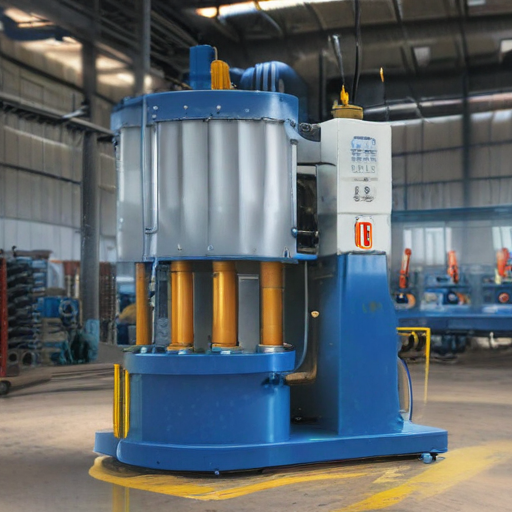
How to use “electric grease pump”
Using an electric grease pump is straightforward but requires attention to detail to ensure efficient and safe operation. Here’s a concise guide:
Steps to Use an Electric Grease Pump:
1. Preparation:
– Read the Manual: Before starting, read the user manual to understand specific model features and safety instructions.
– Check Power Supply: Ensure the pump is compatible with your power source (usually 110V or 220V).
– Safety Gear: Wear appropriate safety gear, such as gloves and safety glasses.
2. Setup:
– Fill the Grease Reservoir: Open the pump’s reservoir and fill it with the recommended grease. Avoid overfilling.
– Secure Connections: Attach the grease hose and nozzle securely to the pump. Check for any loose fittings.
3. Operation:
– Power On: Plug the pump into the power outlet and turn it on using the designated switch.
– Priming (if needed): Some pumps require priming to remove air pockets. Follow the manual’s priming procedure.
– Apply Grease: Direct the nozzle to the lubrication point, press the trigger, and apply grease. Move the nozzle steadily to ensure even distribution.
– Monitor Pressure: Keep an eye on the pressure gauge to avoid over-pressurizing and damaging components.
4. Maintenance:
– Clean the Pump: After use, clean the nozzle and hose to prevent clogging.
– Check for Leaks: Inspect the pump and connections for any signs of leakage.
– Store Properly: Store the pump in a clean, dry place to prevent contamination and corrosion.
Tips:
– Use the Right Grease: Always use the grease type specified in the manual to avoid damaging the pump or equipment.
– Regular Maintenance: Regularly check and maintain the pump to ensure longevity and efficient performance.
Following these steps ensures that you use your electric grease pump effectively and safely, keeping your machinery well-lubricated and operational.
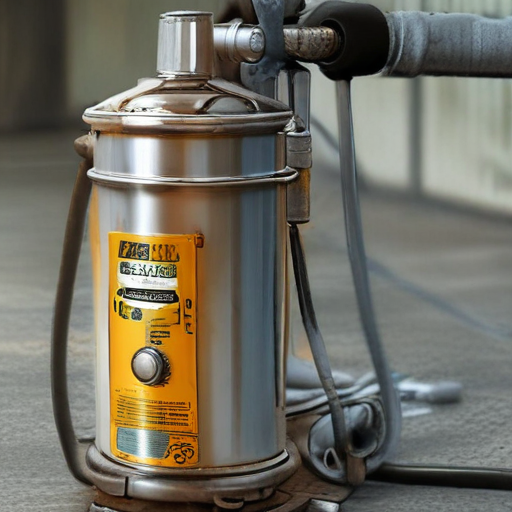
“electric grease pump” Comparative Analysis
Electric grease pumps are essential tools for automating lubrication processes in various industrial settings. Here’s a comparative analysis of key aspects to consider when evaluating different models:
1. Power Source and Efficiency
Electric grease pumps operate on AC or DC power. AC models are typically used for stationary applications due to their reliance on a constant power supply, whereas DC models offer portability and are battery-powered, ideal for mobile use.
2. Pressure and Flow Rate
The pressure rating determines the pump’s ability to deliver grease to high-pressure points. Typical electric grease pumps offer pressures from 3000 to 10,000 PSI. Flow rate, measured in grams per minute (g/min), affects how quickly the grease is dispensed. A higher flow rate is beneficial for large-scale lubrication tasks.
3. Reservoir Capacity
Reservoir size impacts how often the pump needs refilling. Small reservoirs (1-2 liters) are suitable for low-volume applications, while larger reservoirs (up to 20 liters) are better for extensive systems requiring continuous lubrication.
4. Control Mechanism
Modern electric grease pumps feature programmable controls, allowing precise regulation of grease output. Digital interfaces with settings for timing and quantity enhance operational efficiency and consistency.
5. Durability and Build Quality
High-quality materials, such as stainless steel and reinforced plastics, ensure the pump’s longevity and resistance to harsh industrial environments. Look for models with robust construction to withstand wear and tear.
6. Ease of Maintenance
Easy-to-clean designs and accessible parts reduce downtime for maintenance. Models with fewer moving parts tend to have lower maintenance needs.
7. Price and Warranty
Pricing varies significantly, from a few hundred to several thousand dollars, depending on features and capacity. Consider the warranty period, as longer warranties often indicate better quality and manufacturer confidence.
Popular Models Comparison
– Lincoln 1884: Known for durability and high pressure (7500 PSI), ideal for heavy-duty applications.
– Graco G3: Offers advanced control options and reliable performance, suitable for industrial settings.
– SKF TLGB 20: Portable with a high flow rate, great for mobile equipment lubrication.
In summary, when choosing an electric grease pump, consider your specific needs in terms of power, pressure, reservoir size, control features, durability, maintenance, and budget. This will help ensure you select a model that enhances efficiency and reliability in your lubrication processes.
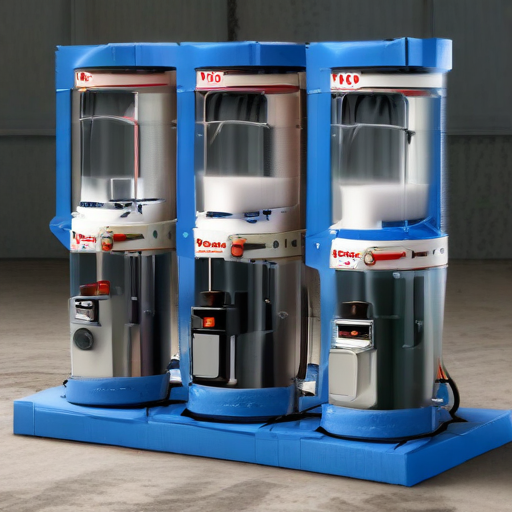
“electric grease pump” Warranty and Support
Electric Grease Pump: Warranty and Support
Warranty Details:
– Duration: Most electric grease pumps come with a standard warranty period ranging from 1 to 3 years, depending on the manufacturer and model.
– Coverage: The warranty typically covers manufacturing defects and failures due to normal usage. It often includes parts and labor costs.
– Exclusions: Common exclusions are damage due to misuse, improper installation, lack of maintenance, and wear and tear.
– Claim Process: To claim warranty, you usually need to provide proof of purchase and sometimes register the product with the manufacturer. The process might involve returning the product to an authorized service center.
Support Services:
– Technical Support: Manufacturers offer technical support via phone, email, or online chat. This helps in troubleshooting issues and understanding product functionalities.
– Service Centers: Authorized service centers provide repair and maintenance services. It’s essential to use these centers to avoid voiding the warranty.
– Spare Parts: Availability of genuine spare parts is crucial. Many manufacturers ensure a steady supply of parts for post-warranty repairs.
– User Manuals and Guides: Comprehensive user manuals and troubleshooting guides are usually available online. These documents help users perform minor repairs and maintenance tasks.
– Training Programs: Some manufacturers offer training programs for users to understand the optimal use and maintenance of the electric grease pump.
Additional Considerations:
– Extended Warranty: Many manufacturers offer the option to purchase extended warranties, which provide additional coverage beyond the standard period.
– Customer Reviews: Reading customer reviews can give insights into the reliability of the warranty and support services of a particular brand or model.
– Return Policy: It’s beneficial to check the return policy in case the product does not meet expectations or if there are immediate issues.
For a seamless experience, always adhere to the manufacturer’s guidelines on usage and maintenance. This ensures longevity and optimal performance of your electric grease pump.
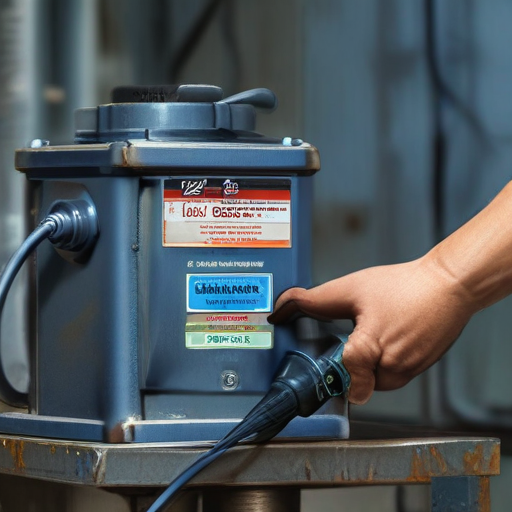
List “electric grease pump” FAQ
Electric Grease Pump FAQ
1. What is an electric grease pump?
An electric grease pump is a device used to dispense grease for lubricating machinery. It uses an electric motor to provide consistent and controlled grease flow.
2. How does an electric grease pump work?
The pump uses an electric motor to drive a piston or diaphragm, which forces the grease through a delivery system to the lubrication point.
3. What are the advantages of using an electric grease pump?
– Consistent and precise lubrication
– Reduced manual labor
– Increased efficiency and productivity
– Improved machinery lifespan and performance
4. Where are electric grease pumps commonly used?
They are widely used in industrial settings, such as manufacturing plants, automotive workshops, construction equipment, and agricultural machinery.
5. How do you install an electric grease pump?
Installation typically involves mounting the pump securely, connecting it to a power source, attaching the grease reservoir, and connecting the delivery lines to the lubrication points.
6. What maintenance is required for an electric grease pump?
Regular maintenance includes:
– Checking for leaks
– Ensuring the grease reservoir is filled
– Inspecting and cleaning delivery lines
– Testing the pump operation periodically
7. Can electric grease pumps handle different types of grease?
Yes, most pumps can handle a variety of grease types, but it’s essential to verify compatibility with the specific pump model.
8. What are common issues with electric grease pumps?
– Clogging due to contaminated grease
– Motor failure
– Leaks in the delivery system
– Electrical issues
9. How can I troubleshoot an electric grease pump?
Check the power supply, inspect for clogs or leaks, ensure the motor is running, and verify that the correct type of grease is used.
10. Are there safety considerations when using electric grease pumps?
Yes, always follow manufacturer guidelines, use appropriate personal protective equipment, and ensure the pump is properly grounded to prevent electrical hazards.
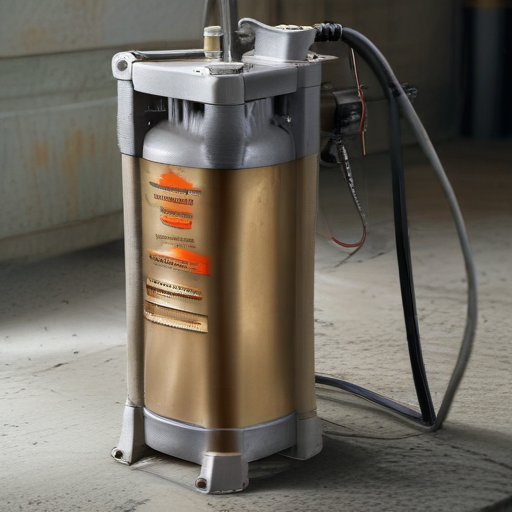
Top 10 FAQ with answer about electric grease pump for Buyer Sourcing from China
Sure! Here are the top 10 FAQs about sourcing electric grease pumps from China, along with detailed answers:
1. What is an electric grease pump?
An electric grease pump is a device used to automatically supply grease to lubrication points in machinery. It uses an electric motor to drive the pump, ensuring consistent and efficient lubrication.
2. Why should I source electric grease pumps from China?
China offers competitive pricing, a wide range of manufacturers, and the ability to customize products. Many Chinese manufacturers have advanced production capabilities and quality control systems.
3. What should I consider when selecting a supplier?
Look for suppliers with a good reputation, certifications (like ISO 9001), and positive reviews. It’s also important to verify their production capacity and after-sales service.
4. How can I ensure the quality of the pumps?
Request samples before placing a large order. Check for certifications like CE or UL, and ask for detailed product specifications and test reports.
5. What are the payment terms commonly offered?
Common payment terms include T/T (Telegraphic Transfer), L/C (Letter of Credit), and sometimes escrow services. It’s common to pay a deposit (30%) upfront and the balance (70%) before shipment.
6. What is the typical lead time for orders?
Lead times can vary but generally range from 30 to 60 days depending on the order size and customization requirements. Always confirm the lead time with your supplier.
7. Can I customize the electric grease pump?
Yes, most Chinese suppliers offer customization options including voltage specifications, material types, and branding (OEM/ODM services).
8. What are the shipping options available?
Shipping options include sea freight, air freight, and express courier. Sea freight is the most cost-effective for large orders, while air freight and courier services are faster but more expensive.
9. How do I handle after-sales service and warranties?
Ensure that your supplier offers a warranty period (usually 1 year). Discuss and agree on the terms for after-sales support, including replacement parts and technical support.
10. What documentation should I prepare for importing?
You will need a commercial invoice, packing list, bill of lading, and certificates of origin. Check with your local customs for any additional requirements specific to your country.
These FAQs cover the essentials of sourcing electric grease pumps from China, helping you make informed decisions and ensuring a smooth procurement process.

